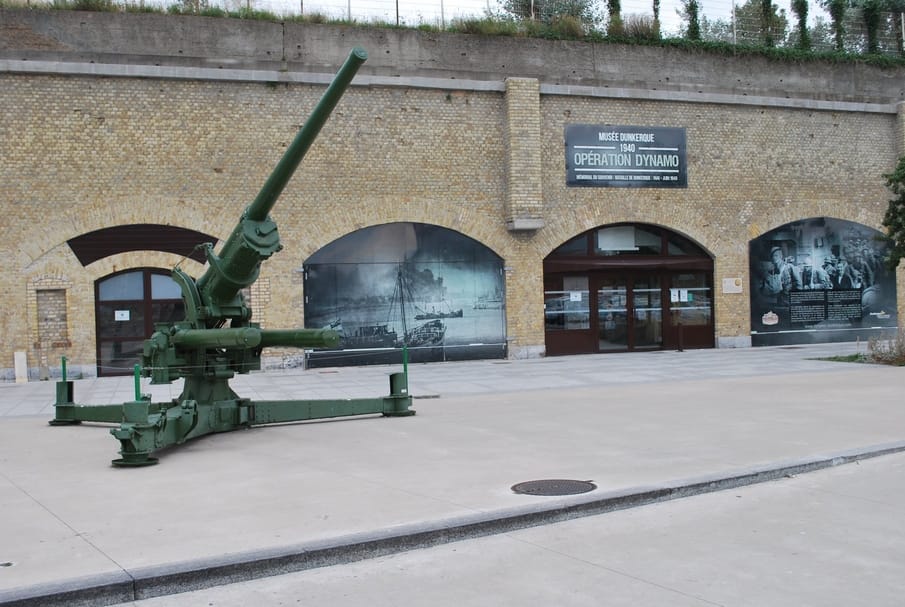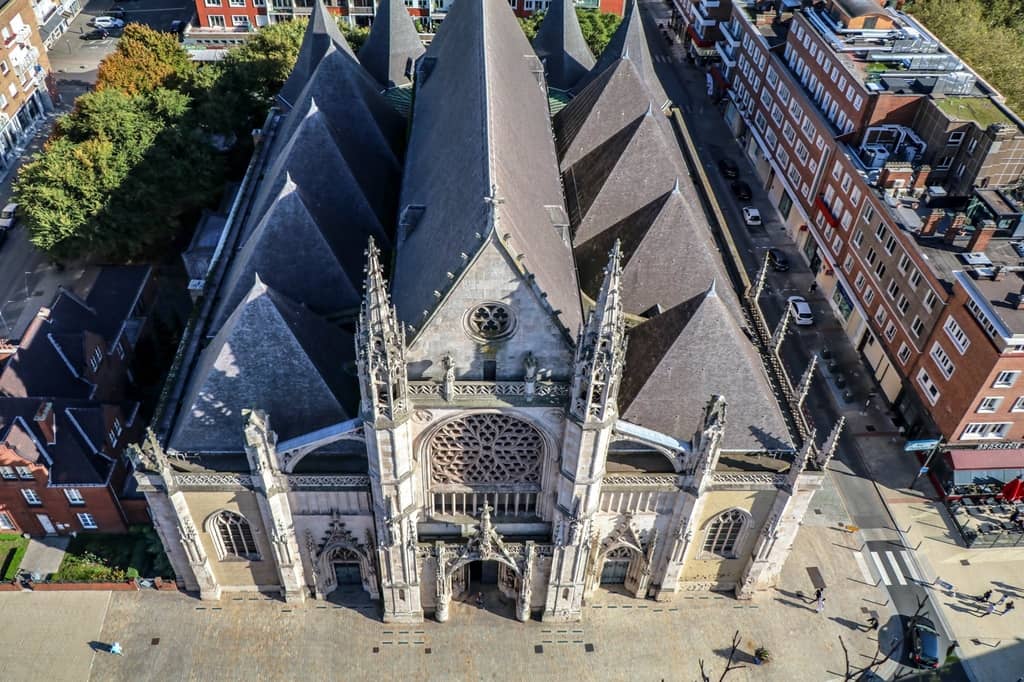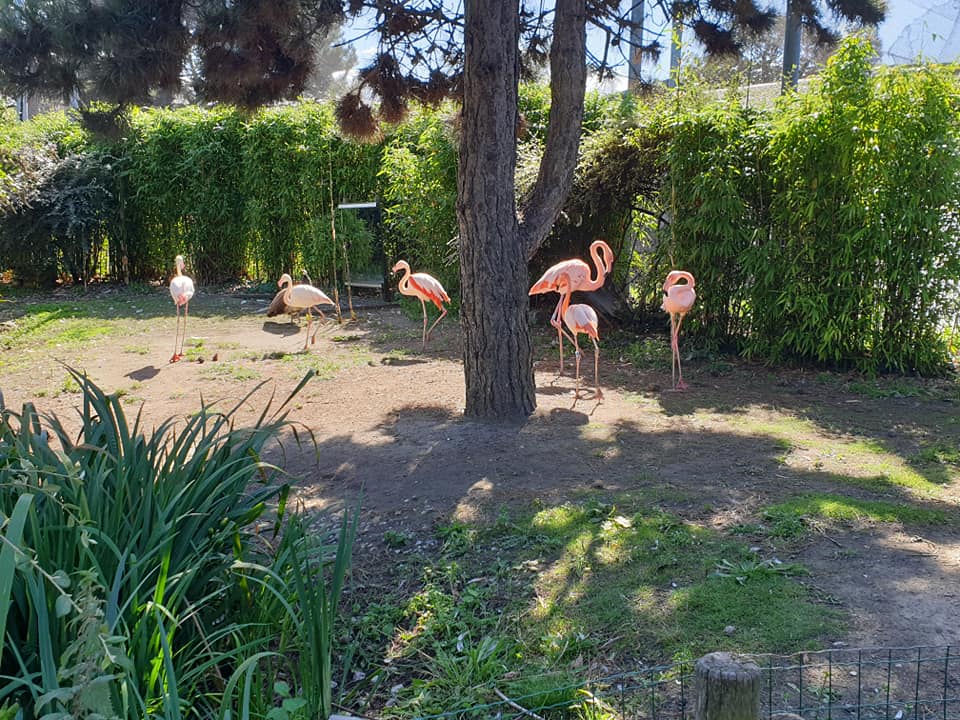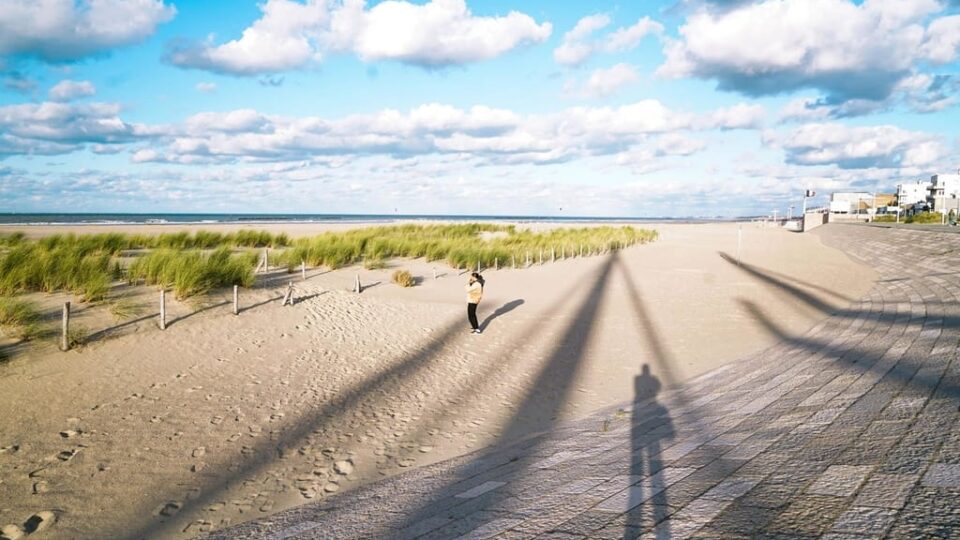Is Dunkirk Worth Visiting?
There is a huge historical element to Dunkirk that sprawls on the mind of many when they hear its name. Dunkirk, in 1940 became widely known across the world after the commendable evacuation of the Allied troops. Devastated by German attacks, it was built again after the war during one of the most uninventive eras in architectural history. Dunkirk is a few minutes from the border with Belgium. While the modern French city has a cherished little allure, it does not come short in its offerings with its flamboyant pre-Lent carnivals and family-friendly beach.
Dunkirk also has a brilliant Port Museum, astonishing contemporary art, a delightfully long seafront with bars and restaurants that looks out to the pristine beaches, and some fantastic events all-year-round. You will also find reminders and memorials of the Second World War in Dunkirk and the surrounding rural area. Altogether, it makes for a dazzling town to visit.
Here Are Some Things Dunkirk is Worth Visiting For
Connect with History at Musée Portuaire
The town’s 1800s tobacco warehouse is one of the few historical structures that the war did not destroy. It offers a remindful home for a museum that will tell visitors the long and engrossing port’s story. Part of the many exhibits are those dedicated to Dunkirk’s cod fishing and whaling industries in the 1800s that require about 6 months of expeditions to the waters around Iceland.
Moored at the quay close to the museum are three heritage ships. The largest of them is Duchesse Anne, a three-mast vessel built in 1901 at Bremerhaven, Germany. For a tour of France, this is the only tall ship that one can board.

Capture the Views at Beffroi de Dunkerque
All the belfries of Flanders have UNESCO-site status, and so does Dunkirk’s. Beffroi de Dunkerque was built in the 1400s in the place of an old watchtower. It used to be the campanile of the neighboring Saint-Eloi church. However, sometimes in the 16th-century, the church was not spared as a French incursion occurred in the city. Just the tower remained.
Beffroi du Dunkerque is almost 60 m tall. Visitors can visit there and even reach its top for a splendid panorama of Dunkirk. Meanwhile, this view is something you will have to work for because even after using an elevator five floors up, there are about 60 steps to still take.
There is the carillon of 48 bells you will see there and the machination responsible for controlling them. Every 15 minutes, they chime, and on the hour they play a La Cantate à Jean Bart snip- a number with special meaning for the town.

Watch the Beach Disappear at Plage de Malo-Les-Bains
Dunkirk’s humongous sand beach starts at the east of the port. It is one of the most gigantic in the north and a must-see on summer days. Malo-Les-Bains used to be a different place, but since the 1960s, it has become a part of Dunkirk.
Close to the promenade are a strip of restaurants and ice cream stalls where you can get French fries and mussels and watch the beach vanish on the horizon. If children are accompanying you, take them to a pedal-kart drive along the waterfront. But if you want something bigger, go for a four-seater with each having pedals. On the Flemish coast in the resorts, these vehicles are ubiquitous.
Learn WW2 History at Dunkirk Museum
Built in 1874, Bastion 32 used to be a coastal fortification constructed after the Franco-Prussian war to protect the French border. It is from this defense system that the Allied forces planned Operation Dynamo in May and June 1940 when over 330,000 troops were evacuated from France.
The galleries will tell visitors all they need to know how the operation was executed. You will also know about some of the events that occur in a spectacular chapter of WW2.
See Amazing Animals at Parc Zoologique de Fort Mardyck
Even though it is not the country’s largest zoo, Parc Zoologique de Fort Mardyck invites children to see different kinds of animals without a dour moment. You will find about 40 species at the zoo, among which are lynxes, brown bears, macaws, seals, flamingos, griffon vultures, and beavers. You will also see the pig-like collared peccary- a South and Central American mammal. Interestingly, it can withstand a bite from the most poisonous snakes.

LAAC
In the lush green surroundings of the garden, just adjacent Dunkirk 1940, is LAAC. This is a modern art museum situated in a massive building adorned with white ceramic tiles. Here, you will see over 1,500 pieces, dating between the 1940s and 1980s, with a striking mark on pop art and pieces by CoBrA artists.
Karel Appel is a member of this defunct movement, whose sculptures are on display inside and outside. Another spectacular feature is LAAC’s Cabinet d’Arts. It has drawers to pull out, bearing about 200 drawings and prints.
Explore Tour du Leughenaer
Dunkirk’s oldest monument is this 30 m tall octagonal tower close to the fishing vessel on Quai des Americains. Finished in 1450 as a beacon, it was modified over the following centuries. In the 18th-century, the brick tower was modified into a viewing plain for the harbor. Then in the early 1800s, a lantern was added, and the tower became a lighthouse.
It has a funny name because, in old Dutch, it means ‘liar’. It got the name because many ships are said to run aground as guided by this beacon. The story went everywhere that the deceit was on purpose so that the town could ransack the maroons.
Celebrate Like a Local at the Dunkirk Carnival
The town’s bonkers carnival is famed across the country. The party is held from mid-January to March’s end, but the time to visit is for the 3 days before Ash Wednesday. During the festivity, about 40,000 partiers go to the streets in frenzy costumes. The ‘visscherbende’ band parades the town donning yellow rain hats, playing musicals for everyone to participate and dance.
These depict the fishermen who used to go as far as Iceland to catch herring. To mark this, the town’s mayor hurls close to half a ton’s worth of smoked herrings at the cheering crowd on a Sunday afternoon.
La Dune Marchand
An 83-hectare nature reserve, right up against the Belgian border, protects several dune systems on the coast of Flanders. There are over 400 plant species in this dynamic environment, including buckthorn, marram grass, and dune grass. You may identify the song of the nightingales in the park during the spring, while migratory birds will make their nests in the shrubs, long grass, and woodland in the autumn. Plage a Brat-Dunes, the beach is wonderful at low tide when the sands appear to move endlessly. Visit for timeless fun with friends and family on sunny summertime or windy times in winter.
Walk the Ramparts in Gravelines
In the 1600s, Gravelines was on the border between Flanders and France when it was under Spanish control. After the capture and subsequent liberation, the town became well fortified, as you will see in many of its architecture.
The revered engineer, Vauban, was called to design the town’s fortification. He will turn Gravelines to a citadel, setting up strongholds and digging a moat network that still has a star shape today. The interesting thing about visiting the town is walking the bastions and seeing the arsenal that is now a museum for engraving and drawing. Gravelines’ belfry is among the 23 on UNESCO’s record.
Take Pictures at Bergues
South of Dunkirk, less than 10 km, is a fine town protected by ramparts that Vauban also designed. But this integrates earlier medieval fortification systems. Go for a relaxing walk on the green banks of the canals and twisting moats. Bergues’ highlight is the 47 m belfry that is made of yellow sandstone, which is also on UNESCO’s list.
Platier d’Oye
This is a system of sea-level wetlands recognized for being migratory birds’ first feeding area in their route to winter quarters. The lagoons and ponds are supplied by the River Aa. Therefore, the varying salinity levels in the soils permit a diversity of plant species in such a small space. Throughout the year, you can see shorebirds and waterfowl, but if you visit in winter, there are choughs, skylarks, and snow buntings.
Is Dunkirk France Worth Visiting? – Summary
Life in the town in Dunkirk is inclined to the sea, whether through fishing, historical whaling, or trade. The town will offer exhilarating activities, including walks in dune scenic and the beach. Dunkirk evokes the 1940 withdrawal of the Allied troops from France. There is a brilliant museum that covers this more. And do not forget to see the UNESCO-recognized belfry and the port’s museum with its ships. Dunkirk is your chance to enjoy northern France and boast your WW2 history knowledge.
